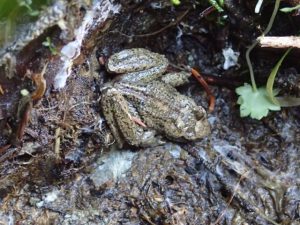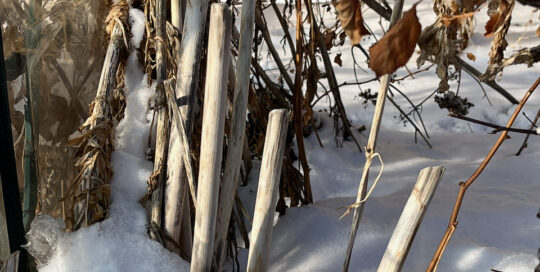Why frogs and toads are good for your garden
Views: 2155

Beyond the voracious marauders of deer, rabbits, or ground squirrels, when we think wildlife in the garden, we often envision birds and native bees or other insects. And while the birds and bees are undoubtedly valuable, having toads and frogs in the garden is a real treat.
We had lots of toads in the garden growing up in Ohio, and I frequently kept them as pets. I have to wonder if there as prominent now. Toads are very sensitive to pesticides, herbicides, and other environmental toxins. They will not live if there are too many present. As a result, they’re considered a keystone species — kind of like the canary in the mine — letting you know the health of your backyard.
Because of our dry climate in Montana, I’m amazed that we actually see more frogs, particularly the chorus frogs that inhabit small ponds and water features, in our area instead of toads. There is a distinct difference in their appearance. Frogs tend to have smoother skin and are typically moist since they partly live in the water. Toads are their dryland cousins with dry, bumpy skin. But, it’s good to note, they don’t have warts, as is often stated. They’re actually paratoid glands that produce a toxin to discourage predators. (As a means of defense, they’ll also urinate on you, which can cause an immediate release if you’re not expecting it.)
It’s a good day when either frogs or toads take up residence in the garden since they are carnivorous and will eat practically anything they can grab. This means earwigs, grasshoppers, and grubs are on the menu. So while the birds can pick off the insects from the top, toads and frogs handle the action in the understory of the garden.
Encouraging Toads and Frogs
So what can you do to make your garden a toad or frog friendly habitat? The most important first step is to lay off the herbicides and pesticides. If you use poisons, try to go as mild as possible. Bt, at least on the home level, is still safe for amphibians. As with everything, keep the sprays of any sort to a minimum.
Create habitat for them and they will come. For frogs, this means making some sort of water source, if one isn’t already present. A small pond, even 3 ft. in diameter, is enough to bring in frogs from nearby sources. But since frogs spend most of their time on land, making sure they have cover, as well as terrific hunting grounds is the best way to keep them close to where they are most needed. This applies for the terrestrial dwelling toads, as well. Make them a little house by stacking rocks to form a tiny cave, or half bury a terra cotta flower pot. This gives them a place to dash out of the sun and away from the eyes of potential predators.
When you create a conducive space, the amphibians will find you eventually. And while it’s tempting, don’t bring in frogs and toads on your own. Nor do you want to bring in non-native species. Bull frogs are a huge problem in some parts of the country. As is often the case with non-native invaders, it only takes a male and a female to upturn the natural system. They are prolific breeders and voracious feeders, even eating their own species. Never release them. If you do have them in your landscape, do your best to create barriers to prevent them from leaving. They’re still effective predators in the garden, but they will eat even the native frog and toad species, as well as birds, mice, or anything else that can fit into their gaping mouths.
Enjoy your amphibians in the garden knowing they are cleaning up the pests below your plants, as well as being delightful neighbors.
Meet Amy Grisak
Amy is a freelance author and photographer in Great Falls, MT who specializes in gardening, foods, and sustainable agriculture. She provides information on every kind…
Amy's Recent Posts

This Little Piggy is a Problem: Dealing with Feral Hogs








